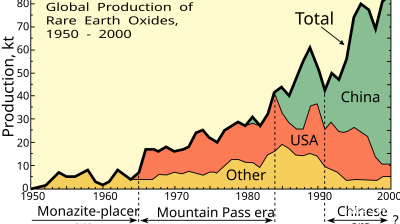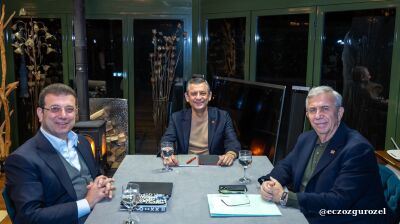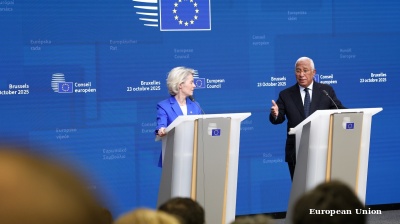Central and Southeastern Europe is so far defying German economic weakness, and growth in the region should recover robustly next year, according to the Vienna Institute for International Economic Studies (wiiw) in its autumn forecast.
The wiiw has cut its forecast for average growth for the EU member states in the region this year to 2.2%, down by 0.4pp from its summer forecast, but growth next year is predicted to rise to 2.9%. This is well ahead of its forecast for the eurozone of 0.6% this year and 1.4% in 2025, which would mean accelerated economic convergence with Western Europe.
The Central European region in particular is traditionally heavily dependent on German industry for export orders, notably in the automotive sector, and the bellwether German IFO Business Climate Index has now been in decline since mid 2021.
Automotive exports represent almost a third of GDP in Slovakia, and some 15% in Czechia, Slovenia and Hungary, much of this representing parts for German carmakers or finished cars for Western Europe.
The recession in the German automotive industry is dragging down its Central European counterparts and knocking exports and industrial production more generally.
The wiiw report warns that not all of the recession in the German automotive industry has so far been felt in Central Europe and further difficulties should be expected.
“The crisis in Germany is weighing like a millstone on many economies in the region, limiting their growth prospects,” said Richard Grieveson, wiiw deputy director.
He reiterated that Central Europe had many times in the past shown its resilience, but added that the German automotive industry’s “multi-year structural crisis” would be bound to have an impact.
“They will not be able to avoid it,” he told a webinar to publicise the autumn forecast. “But it will be very differentiated in its impact.”
Private consumption to the rescue
At the same time, the region’s economies have been supported by what the wiiw called “buoyant” private consumption, with real wages turning sharply positive as inflation falls, after real wages declined during the spike in inflation caused by rising energy prices following the 2022 Russian invasion of Ukraine. Consumption has also been supported by monetary loosening and strong growth in bank credit.
So far the rise in private consumption in Central Europe has not been in line with the increase in real wages, perhaps because of uncertainty over the economic outlook, given the downturn in Germany. “There is room for these countries to increase consumption in the coming years,” said Branimir Jovanovic, wiiw economist.
The wiiw predicts that recovering investment will also contribute, helped by monetary loosening, FDI, and drawing down of EU funds.
Poland has been one of the Central European region’s outstanding performers. The wiiw predicts it will grow 3.1% this year and 3.7% in 2025. “Poland has always been a country that in difficult times overperforms,” said Grieveson.
Conversely, the Baltic states have been notably weak, particularly Estonia, which is only now beginning to emerge from a two-year recession.
Grieveson said the Baltic states were slow to cut their trade links with Russia after its initial incursions into Ukraine in 2014, and therefore the cut-off in trade and spike in inflation after the 2022 full-scale invasion were all the more painful.
“They are still struggling with that. They are still coming through this,” he said. “They will be back but the shock that hit them was so big.”
Inflation has been coming down across the Central European region, allowing central banks to reduce interest rates, though the wiiw predicts that inflation will nudge back up, pushed by the end of energy price subsidies, as well as food price rises caused by this summer’s drought. It has significantly increased its forecasts for inflation in Central Europe in 2025.
Fiscal balances remain challenging, with even the European Union member states continuing to run deficits above the EU Stability and Growth Pact’s threshold of 3% of GDP. This will prevent fiscal policy supporting economic growth.
“We don’t see austerity yet, big fiscal consolidation, but [fiscal policy] won’t be supportive,” said Jovanovic.
Grieveson said Slovakia and Romania would have the biggest challenges to cut their deficits. Yet he pointed out that bond markets had so far been remarkably tolerant of the region’s fiscal overshooting.
“We don’t see pressure from the bond market, credit spreads are falling. As long as they deliver strong economic growth the market is going to finance this. This has been a positive surprise,” Grieveson said.
SEE countries race to catch up
In Southeastern Europe growth has been stronger, giving a fillip to its drive to converge with Western Europe. The wiiw has increased its forecasts for this year and next, while reducing them for 2026.
Croatia is forecast to grow 3.3% this year and 3.0% in 2025, while the Western Balkan region should grow by 3.4% on average in both years. Romania is forecast to grow 2% this year and 2.5% in 2025.
In a recent report the wiiw said the Western Balkan region, as well as Hungary, were the only places in CEE where nearshoring could be said to be taking place to a significant extent. In Central Europe – whose FDI boom began much earlier in the mid 1990s – fresh inflows of foreign direct investment (FDI) are hamstrung by continuing acute labour shortages.
Turkey is forecast to grow 3.4% this year and a robust 4.0% in 2025 as inflation falls sharply.
For Russia, the wiiw has upgraded its forecast for economic growth this year by 0.6pp from the summer forecast to 3.8% but cut it for 2025 to 2.5%. Interest rate rises to moderate overheating are biting. “This growth model is hitting its limits,” commented Grieveson.
Secondary sanctions on third country banks are also starting to take effect. Russian goods imports fell by around 8% in the first eight months of this year. “This is due primarily to the fact that these banks are increasingly delaying or refusing to process payments for imports. While Russia is working on such alternatives as establishing Russian bank subsidiaries in China, it is also partially dependent on barter transactions,’ said Vasily Astrov, Russia expert at wiiw.
The wiiw predicts the Russian budget deficit will amount to 1.5% of GDP in 2024 and then fall to 1% in 2025.
“Putin will therefore have enough funds at his disposal for the foreseeable future to continue financing the war against Ukraine,” said Astrov. “He will also benefit from the fact that, from 2025, government revenue will be less dependent on energy exports, which are susceptible to sanctions. This change will be due, among other things, to an increase in income and corporate taxes.”
For Ukraine, the growth forecast has been cut to 2.7% this year and 3.3% in 2025, the latter a big reduction of 0.7pp from the summer forecast. “This winter, Ukraine could lack around a third of the electricity it needs. This is not only a humanitarian problem, but it also has a huge impact on the economy,” said Olga Pindyuk, Ukraine expert at wiiw.
The wiiw points out that Ukraine will need to spend 6% of GDP on debt service payments in the coming years. Next year its budget deficit is estimated at $35bn, or 16% of GDP, and $15bn of this is still uncovered.
Among the biggest risks to its forecast, the wiiw highlights the election of Republican candidate Donald Trump as US president next month, and the likely intensification of the US trade war with China, and possibly with the EU too.
“Higher tariffs would, of course, be damaging to the heavily export-oriented industries of both Western and Eastern Europe. Business investment could also be adversely affected,” said Grieveson.
Features

Asian economies weigh their options amid fears of over-reliance on Chinese rare-earths
Just how control over these critical minerals plays out will be a long fought battle lasting decades, and one that will increasingly define Asia’s industrial future.

BEYOND THE BOSPORUS: Espionage claims thrown at Imamoglu mean relief at dismissal of CHP court case is short-lived
Wife of Erdogan opponent mocks regime, saying it is also alleged that her husband “set Rome on fire”. Demands investigation.

Turkmenistan’s TAPI gas pipeline takes off
Turkmenistan's 1,800km TAPI gas pipeline breaks ground after 30 years with first 14km completed into Afghanistan, aiming to deliver 33bcm annually to Pakistan and India by 2027 despite geopolitical hurdles.

Looking back: Prabowo’s first year of populism, growth, and the pursuit of sovereignty
His administration, which began with a promise of pragmatic reform and continuity, has in recent months leaned heavily on populist and interventionist economic policies.



